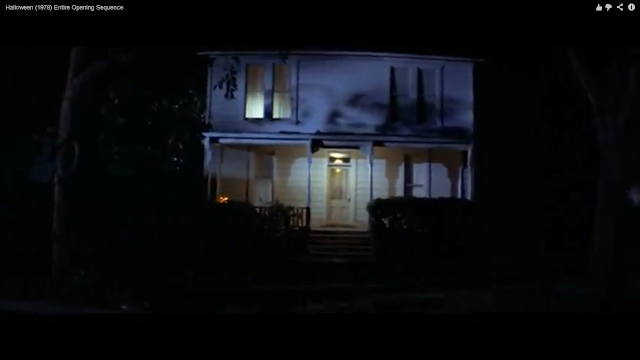Jasmine's House
I have decided to set the basis of my film in a house. For a psychological horror, this is a main convention which I feel will allow the audience to put themselves in the characters positions. This will also create realism, something that every film must include in order to create a film of a professional and sophisticated level. I am going to also use a few other locations, so the audience do not get uninterested in where the action is taking place, e.g. flashbacks, but the majority of footage will be found inside of the home. Also,the idea of using a home is a place my target audience would normally associate with security and comfort because they will be living away from home, so the idea of a family home that presents scenes of terror and horror should unnerve them completely.
Cheney School (Drama Room)
Me and my partner thought it would be practical to film in school rather than out of school, this was because it would be more convenient, for e.g if we had any filming errors we wouldn't have to travel to a far location to shoot again. All of our film is based in this room because it presents a sense of homeliness.

Cast:
Leena Wilkes (Oria Malik)-Protagonist
For the character playing 'Leena Wilkes' , i have chosen one of my friends to act her below. As you can see she has pulled of a very upset and depressed look, i have planned for her to be wearing dark clothes to connoatate that she's not happy and jolly like her mum. She fits in with her role because she looks simple with no makeup and special hair done.
For the character playing 'Leena Wilkes' , i have chosen one of my friends to act her below. As you can see she has pulled of a very upset and depressed look, i have planned for her to be wearing dark clothes to connoatate that she's not happy and jolly like her mum. She fits in with her role because she looks simple with no makeup and special hair done.
Maya Stone (Zahra Malik)- Protaginists Friend
This is our protagonists friend, who is a typical teenager, who likes her education and fashion. As you can see she doesn't look like a very mature neither very young teenager and pulls off a realistic look.
This is our protagonists friend, who is a typical teenager, who likes her education and fashion. As you can see she doesn't look like a very mature neither very young teenager and pulls off a realistic look.
Maya Stone (Zahra Malik)- Antagonist's Friend
Alveena Wilkes (Elly) Protagonist's Mum
For the character playing ‘Leena's’ mother, I have chosen to use the actor below. With hair and makeup she is able to pull off a sophisticated look, where the audience can believe her to be a mother. She has a normal look which I think is important for the mother to have in my film and she also seems happy and joyful.
Hair, Costume and Makeup:
For my main task have decided to go with a more natural look for my cast, i intend not using dramatic makeup and hair as the normal horror genre would use because our film needs to look realistic. If dramatic makeup is not used the audience are also then able to relate to the characters, making it scarier when they begin to put themselves in their position and understand the characters more well rather than the usual stereotype. I also feel that in psychological horror films, you do not tend to see characters with overwhelming makeup; it is more subtle and realistic. I am aware that the makeup of the antagonist needs to look tired and tormented. I am going to try and achieve the look where by ‘Leena’ will look pale, but fresh faced, again reflecting a pure and innocent person, but also reflecting the fact that she is troubled and determined.
‘Leena’ will be wearing a casual outfit consisting of skinny jeans and a dark blue jumper reflecting her young age and her innocence. Also, I think this will also reflect the stressful side of ‘Leena’ as the dark colours will present a lone and boring life. I plan to dress the antagonists (Leena's) friend's outfit consisting of a red party wear top and black shiny jeans, this connotates she is happy and cheerful and not in the same position as 'Leena'.
I am going to have 'Leena's' hair straight and down, reflecting a young and girly person, but i don't want her to look perfect reflecting the fact that she has been neglected. I therefore think that she should look hard done by stress, and by having messy hair I believe that I can achieve this look, along with makeup and costume. The antagonists friend 'Maya', will have her hair long and straight as I think that this is a typically teenage girl hairstyle, this look will allow the audience to appreciate her age and make it more believable to the fact that that she is a teenager.
Props:
This is the book that our protagonist is supposed to be reading because she is depressed and isolated.
A TV and remote:

Makeup for the mum (Alveena Wilkes) person that scares Leena Wilkes when she looks into the TV:









.jpg)
























